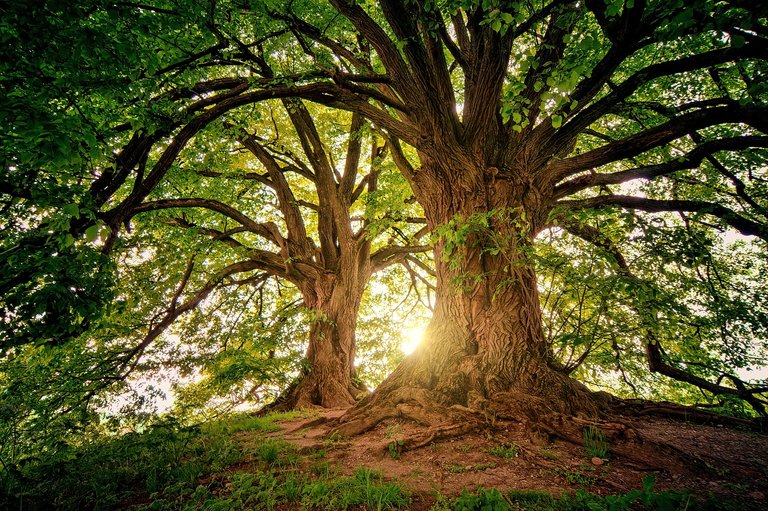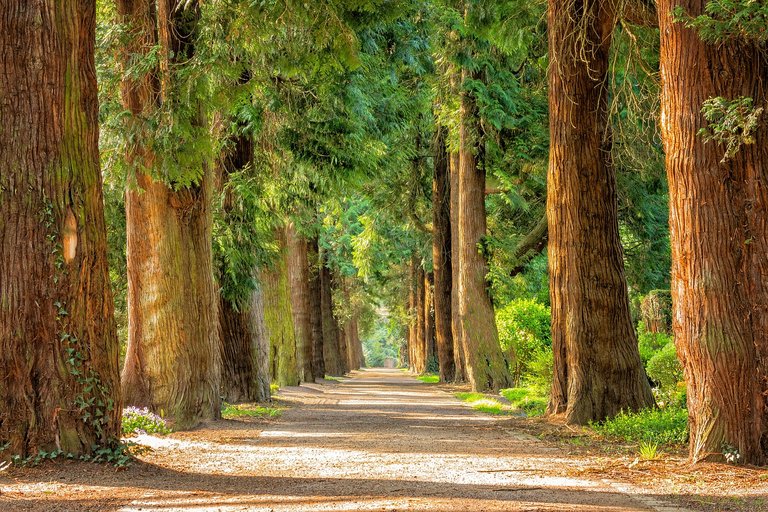Trees are reflections of the human journey: The Scientific reasons why trees should not be cut down
In cities, trees have to be cut down because of the growing need for infrastructure, homes, and businesses. As cities grow quickly, forests are often cut down to make room for more cities. The tricky problem of finding a balance between human progress and environmental protection is shown by the way that urban growth and environmental protection go hand in hand.
When people decide to cut down trees, economic benefits play a big role in the decision-making process. For example, logging is done to get wood or to make paper. It is a big industry that makes a big difference in the economies of the places where it happens. Deforestation, soil degradation, and the permanent loss of important ecosystem services are all bad things that can happen when forest resources are used without control.
Also, it's important to note that in some places, trees are cut down to get fuelwood, which is a basic source of energy for many people. While the above practice meets current energy needs successfully, it has the potential to cause trees to be cut down, soil to wash away, and resources to decrease.
Figuring out the many reasons why people cut down trees is the most important thing that can be done to solve environmental problems. To find a balance between the needs of people and the need to protect the natural environment, we need to support sustainable forestry methods, start reforestation projects, and fully adopt alternative energy sources. We can work toward a future where the benefits of woody plants are valued and protected for future generations by making it a shared responsibility to protect our arboreal environments.
The scientific rationale behind the preservation of trees and the avoidance of deforestation.
Think about the deep science reasons why we should protect trees while you're in the middle of a lush forest. This will help the natural world and human activities work together in harmony. It is widely thought of that trees are the Earth's lungs. They play a big role in keeping the delicate balance of our ecosystems.
First and foremost, it is important to recognize that trees protect us from the rising amounts of carbon dioxide. Through a complicated biological process called photosynthesis, these organisms are able to take in carbon dioxide (CO2) from their surroundings and turn it into oxygen, which is an essential element for all living things. In addition to making it easier for people and animals to survive, this important interaction also helps to lessen the bad effects of greenhouse gases, which makes a big difference in controlling the temperature.
Apart from respiration, trees are also good ecological engineers because they keep the dirt from washing away and the water clean in their own ecosystems. The deep roots of these plants and animals are an important part of keeping the soil stable, which lowers the risk of landslides and increases the general ecological balance in ecosystems. In addition, it is important to note that trees' leaves naturally filter water by catching and holding on to different pollutants and contaminants. This creates a barrier that protects water basins and other aquatic resources.
It has been seen that trees provide homes for many species, which is part of the complex web of biodiversity. These creatures' growing parts that are attached to trees protect them, and their food-producing parts, like fruits and nuts, provide food for many different kinds of living things. The intricate relationships between plant and animal species in forest environments are very important for keeping Earth's biodiversity healthy and able to adapt to new conditions.
Also, trees are very important for keeping area climates stable. Their shelters provide shade, which lowers the temperature of the air in cities and lessens the effect of what is called the "urban heat island effect." This cooling effect has a positive effect on the general well-being of human settlements. It also helps protect energy resources by reducing the need for artificial cooling systems.
A close study of the scientific literature makes it very clear that protecting trees is for reasons other than their aesthetic value. These creatures are very important to ecological systems because they have a big effect on climate patterns, support many ecosystems, and protect the environment without drawing attention to themselves. The call to stop cutting down trees goes hand in hand with the need to recognize and respect the important scientific contributions that these huge, tough trees make to the health and balance of our planet's ecosystem.
Trees exhibit certain similarities to the human species.
Trees, like humans, serve as silent witnesses to the passing of time by weathering the cyclical patterns of climate change and witnessing the constant flux of life's manifestations. The growth of these creatures, which is marked by concentric rings that look like the ridges on a human hand, tells stories of strength and adaptability. Similar to Homo sapiens, these things stand up straight even when things get tough, showing that they are flexible without permanently changing shape.
In the complicated web of interactions in an environment, trees are like lungs; they take in carbon dioxide and let out oxygen, which is necessary for life. The leaves, which look like the alveoli in the lungs, make it easier for important substances to move around, which is needed to keep the complex balance in our interconnected environment.
Arboreal environments are made up of tree lineages that grow together to form a continuous area called a forest. Forests are like interdependent social networks. Each part of this complex web of species is very important to the health of the whole. The way their underground roots are tangled together is a metaphor for how people are naturally connected to each other within the human species. In their peaceful world, trees show how beautiful it is when people work together and rely on each other, which is a lot like how societies thrive when people work together on projects.
Also, it's interesting to note that trees have a life cycle that looks a lot like the different steps of human development. As seedlings grow into fully grown tree-dwelling organisms with reproductive structures, they show how the processes of birth, growth, and renewal happen over and over again. By looking at how the leaves' colors change over time, one can see patterns that are similar to the different cycles of human emotions and experiences.
When you look at tree-dwelling beings, you can see images of Homo sapiens' journey, which is marked by strength, dependence, and a deep connection to the complex web of existence. The fact that these things are there shows how deeply humans and nature are linked, which makes us think about how deep this connection really is.
References:
- https://byjus.com/chemistry/importance-of-forest/
- https://council.science/current/blog/unveiling-the-health-benefits-of-forests-and-trees/
- https://www.sciencedirect.com/science/article/pii/S1439179121000256
- https://www.treehugger.com/reasons-why-forests-are-important-4868826
- https://www.news-medical.net/news/20230321/Scientists-assess-the-benefits-offered-by-forests-trees-and-green-spaces-for-human-health.aspx


There is reasonable evidence that this article is machine-generated. Posting such content is considered fraud.
Fraud is discouraged by the community and may result in the account being Blacklisted.
Guide: AI-Generated Content = Not Original Content
If you believe this comment is in error, please contact us in #appeals in Discord.